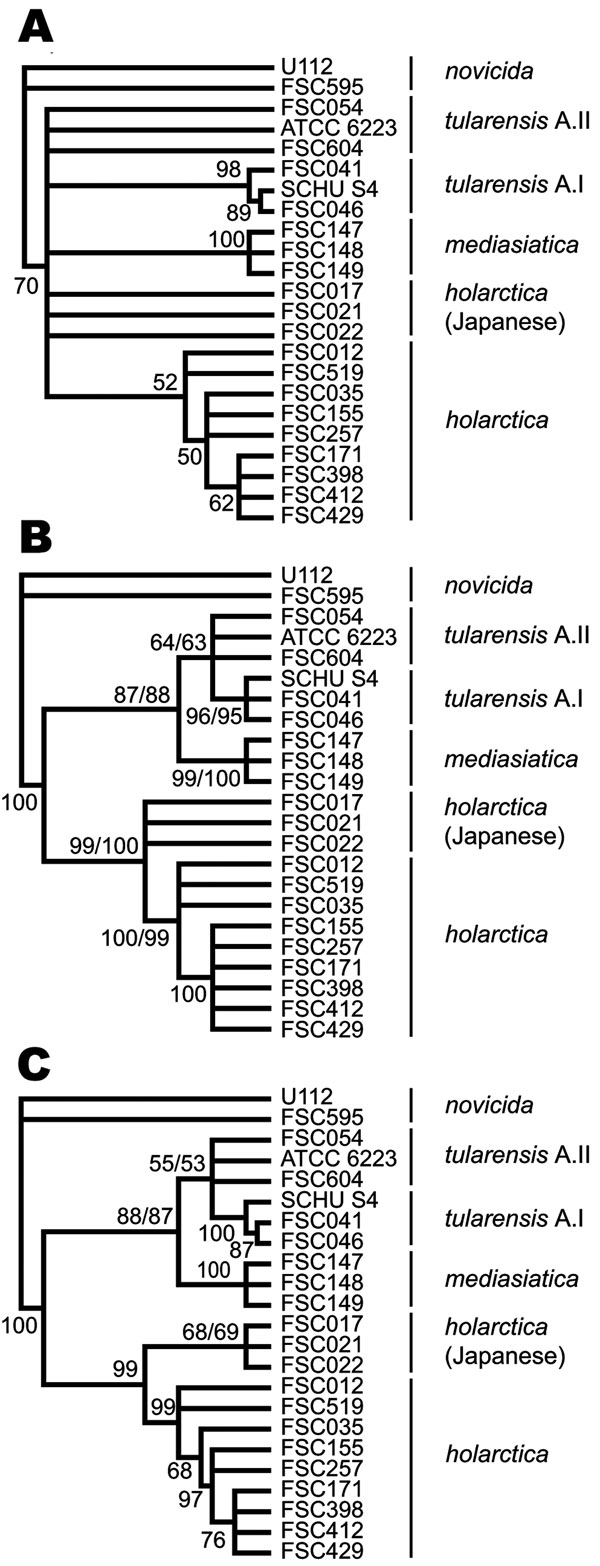Volume 13, Number 11—November 2007
Research
Canonical Insertion-Deletion Markers for Rapid DNA Typing of Francisella tularensis
Figure 4

Figure 4. Cladograms depicting relationships among Francisella tularensis strains obtained by maximum parsimony and bootstrap analysis that used indel, multilocus variable-number tandem repeat analysis (MLVA), or combined data. Nodes supported by <50% of bootstrap pseudoreplicates were collapsed. A) Cladogram obtained solely from the use of MLVA data. B) Cladogram from the use of indel data. C) Cladogram from the combined use of indel and MLVA data. The dual bootstrap support values presented represent the use of each of 2 alleles, found at locus Ftind-32 of strain ATCC 6223.
Page created: July 06, 2010
Page updated: July 06, 2010
Page reviewed: July 06, 2010
The conclusions, findings, and opinions expressed by authors contributing to this journal do not necessarily reflect the official position of the U.S. Department of Health and Human Services, the Public Health Service, the Centers for Disease Control and Prevention, or the authors' affiliated institutions. Use of trade names is for identification only and does not imply endorsement by any of the groups named above.